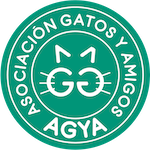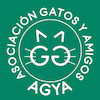TNR Protocol
The Gatos y Amigos Association is applying the TNR protocol in the many existing cat colonies.
Many animal welfare associations and public organisations now recognise that a humane way to deal with groups of feral and stray cats is to capture, sterilise, mark the cat to indicate sterilisation, return and release it into the colony where it was captured. This is known as the CES (Captura, Esterilización y Suelta) or TNR (Trap, Neuter, Release) protocol.
This method of controlling the feral and stray cat population was first developed in the 1970s in Denmark and the UK, and its value has been recognised in many countries.
Neutering eliminates most of the problems of fighting, meowing and urine marking. In due course, most cats will die of old age. No more kittens will be born. Cats become more affectionate towards their feeders and therefore more rewarding to care for.
Cats need to be marked so that it can be known that they have been neutered, to prevent them from being trapped again and taken to the vet, which would cause them stress. The internationally recognised mark is the cut on the tip of the left ear. By marking sterilised cats, a new member of the colony or a recently abandoned cat can be identified.
Controlling a large colony of cats and achieving a stable group of cats will take a few months and it is important to do this quickly, to avoid fertile females becoming pregnant before the colony is under control.
(Source: Cat care and control. WSPA, World Society for the Protection of Animals). London, 1997).
We propose the existence of one or more “caretakers” in each colony, who will monitor the state of health of the cats in the colony, feed them in a regulated manner, with dry food and taking care not to leave any leftover food and keeping the area as clean as possible. These caretakers will also monitor the possible arrival of new members to the colony (stray and abandoned cats).

